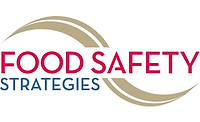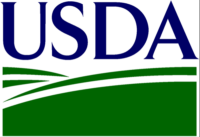Source: The FDA Voice Blog
What a difference a year makes.
In August last year, my team and I visited New England to talk about the rules proposed in 2013 to implement FSMA. We were met with skepticism and some genuine fear that our produce safety proposals did not take full account of local growing practices and would both disrupt traditional practices and deter innovation. These weren’t easy conversations, but they proved instrumental in FDA’s decision to propose—on Sept. 29, 2014—updates, or supplements, to four of the proposed FSMA rules overseeing human and animal foods, both domestic and imported. These proposals include significant changes in the produce safety proposal and related elements of the preventive controls rules for food facilities.
We weren’t quite sure what to expect when we flew to Vermont on Sunday, November 16, for a listening session the next day on the proposed supplemental rules. But the tenor of this visit was dramatically different, and very positive, beginning with the detour we took from our FSMA mission on Sunday to visit leading players in Vermont’s local food movement and artisanal cheese-making community.
Accompanied by Vermont Agriculture Secretary Chuck Ross, we first toured the Vermont Food Venture Center (VFVC) in Hardwick, a regional food hub that leases space to small food businesses, providing kitchen equipment, food storage and business consultations. The goal of this modern, well-equipped facility, as executive director Sarah Waring explained, is to strengthen Vermont’s local food network and agricultural economy.
We then toured Jasper Hill Farm in Greensboro, a renowned maker of artisanal cheeses. We were welcomed by brothers Mateo and Andy Kehler, who have taken an innovative approach to making cheese, using both traditional methods and the latest technology. Their goal is to establish a network of local farms that supply the milk, with Jasper Hill aging and distributing the cheeses in an effort to support small dairy operations.
Our goal was to continue the dialogue we started this year with the cheese-making community to better understand, as food safety regulators, what goes into making artisanal cheeses. We learned a lot, tasted some great cheese, and left impressed by the community-oriented commitment at both VFVC and Jasper Hill Farm, and by their use of top-tier tools to strengthen Vermont’s local food system.
When we arrived back in Montpelier Sunday night, the setting was like something out of a postcard. This picturesque town, the nation’s smallest state capital, was dusted in the season’s first snow, which only accentuated its natural beauty and charm. We were happy to be there.
Monday morning we drove to the Vermont Law School in South Royalton for the FSMA listening session. This school, set in the rolling landscape of rural Vermont, is renowned for its commitment to sustainable environmental practices.
We saw familiar faces. Some had come to the meeting directly from their farm—through the snow. There were people from all over the Northeast—people who had participated in our series of listening sessions throughout New England in 2013. But this time, the response and dialogue were different. We heard acknowledgement and appreciation that we had addressed many of their concerns in our revised proposals by making the proposed rules more feasible, while still meeting our public health goals.
Much of the discussion focused on implementation of the rules, and, interestingly, some of the concerns echoed those we had heard in a November 6 listening session in Sacramento, CA, a place not only on the opposite side of the country but so different in its production systems. Many are finding the complexity of the proposed rules daunting, such as the technical underpinnings of the E.coli benchmark for water quality and the various boundary lines and exemptions that determine who is covered. We’ve always said that we wouldn’t take a “one size fits all” approach, which has contributed to making the rules more complicated. This only underscores our responsibility to explain the rules clearly and to provide education, technical assistance and guidance.
Secretary Chuck Ross said early and often that we need to educate before and as we regulate. And he’s right. I am struck anew by the importance of our partnerships with state leaders. Vermont’s Ross and California Secretary of Food and Agriculture Karen Ross have been invaluable in helping us develop these rules, as they will continue to be as we move towards implementation.
We were grateful for the participation in the listening session by food safety advocates Lauren Bush and Gabrielle Meunier, who each spoke of the devastating effects of foodborne illnesses. Lauren almost died after eating a salad contaminated by E.coli in 2006 and Gabrielle’s young son fought, and recovered from, a Salmonella infection in 2008 after eating tainted peanut butter crackers. Their stories underscore the underlying reason for the effort that so many are making to implement FSMA—to keep people safe.
Some participants expressed the view that even though we decided to defer, pending further study, our decision on an appropriate interval between the application of raw manure and harvest, some kind of interval is needed to protect crops from pathogens. Some suggested that the 90 to 120-day intervals set forth by the U.S. Department of Agriculture’s National Organic Program be adopted as an interim measure.
Others inquired how the FSMA rules would affect them based on very individual scenarios. We asked them, and we’re asking everyone, to comment on the supplemental rules and include those scenarios for us to consider in drafting the final rules. We don’t want to create unintended harmful consequences.
The deadline for commenting on the four supplemental rules for Produce Safety, Preventive Controls for Human Food, Preventive Controls for Animal Food and Foreign Supplier Verification Programs is Dec. 15. Visit our FSMA page on fda.gov for more information.
Our Vermont trip was followed by state listening sessions in Georgia, North Carolina and Florida. I will be filing another FDA Voice blog on what we learned in those Southern states.
Michael R. Taylor is FDA’s Deputy Commissioner for Foods and Veterinary Medicine.
Visit the official FDA Voice Blog or FDA.gov for more information.









